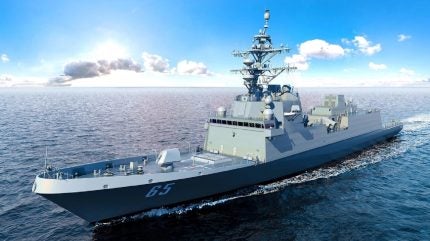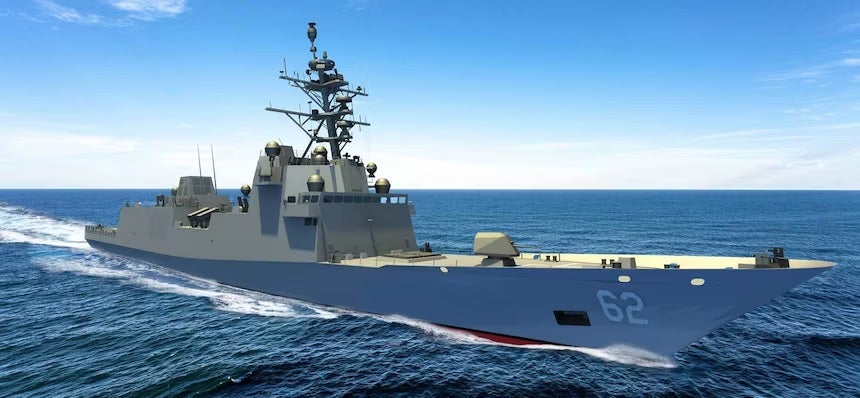
Marinette Marine has been awarded a more than $1bn fixed-price modification to exercise options for the detail design and construction of the next two Constellation-class guided missile frigates (FFG 66 and FFG 67) due to enter service with the US Navy.
The contract modification was revealed in a 23 May 2024, notice by the US Department of Defense, with 51% of the work due to be performed at Marinette Marine’s site in Wisconsin. The entire $1.04bn in cost was obligated at the time of the award, which will come from FY24 shipbuilding and conversion (Navy) funds.
Secretary of the Navy Carlos Del Toro announced the same day that FFG 66 would be named USS Hamilton, following on from USS Constellation (FFG 62), USS Congress (FFG 63), USS Chesapeake (FFG 64), and USS Lafayette (FFG 65).
The award comes just two months after the keel was laid for the first-in-class, the future USS Constellation (FFG 62), in April 2024 by Fincantieri Marinette Marine inside ‘Building 34’, where large sections of the class will be manufactured, and the vessel assembled.
This places six Constellation-class guided missile frigates under contract with the US Navy, with four now on option. The type will be delivered initially as a batch of ten vessels, which will be expanded to deliver a 20-ship class of frigates once completed.
Constellation class: general characteristics

Noticeable has been the pace at which, once the design was finalised as the US Navy has sought to move the platform quickly through to the production phase, indicative of the importance in getting the frigates into service as soon as possible as the service falls further behind China, which numerically far outstrips US naval forces.
One reason for the speed of delivery was the decision to opt for a design based heavily on the Italian-French FREMM frigate, with navies from both countries operating multiple vessels outfitted to their own national requirements.
Another factor helping bring the Constellation class from design to production is the use of mature systems for sensors, machinery, and weapons, with the US Navy seeking to keep potential delivery delays down to a minimum.
According to the US Congressional Research Service (CRS) the US Navy began contracting for the Constellation class in 2020, with a total of six procured through FY24. The CRS states in its Constellation class programme report the US Navy’s proposed FY25 budget requests about $1.2bn for the procurement of the seventh ship, and the procurement of an additional six Constellation-class FFGs during the period FY26-FY30 in annual quantities of 2-1-2-1.
The vessels were originally intended to have an average cost price of around $1bn, but the first-in-class is forecast to cost up to $1.4bn to deliver. The cost of future vessels has been brought down somewhat, but still in excess of early planning.
Constellation class: US Navy returns to frigates after LCS troubles
The Constellation class will be the first frigates operated by the US Navy since the last of the Oliver Hazard Perry-class FFGs left service in 2015, which were intended, in part, to be replaced by the twin-variant Littoral Combat Ship (LCS). The LCS programme has since been curtailed with some vessels decommissioned after just a handful of operational years following a series of setbacks for the type.

Responding to this failure, the US Navy has returned to the FFG as the leading element of what it terms the Small Surface Combatant force, vessels of less displacement than the Arleigh Burke destroyers, Ticonderoga-class guided missile cruisers, and the Zumwalt stealth ships, but still able to operate in contested environments.
The vulnerability of the LCS in operating in contested environments was one of the key reasons for the class being brought to a premature halt.
Additional reporting by John Hill.







